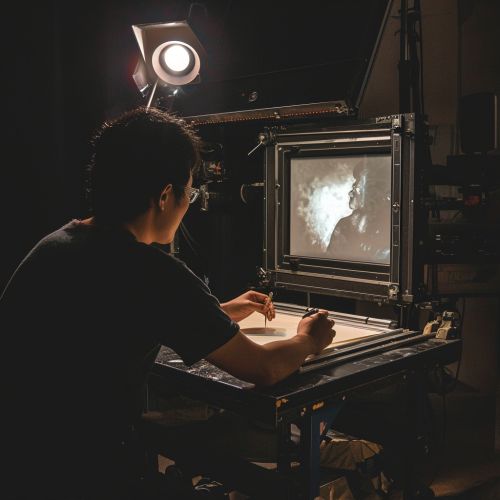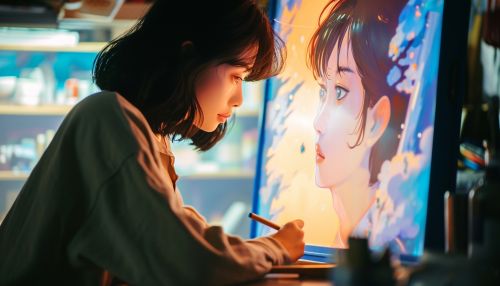Rotoscoping
Introduction
Rotoscoping is an animation technique used by animators to trace over motion picture footage, frame by frame, to produce realistic action. Originally, animators projected photographed live-action movie images onto a glass panel and traced over the image. This process was named rotoscoping, from the Latin 'rota' for 'wheel' and 'scopium' for 'to look at'. The device used in this technique was patented by animator Max Fleischer in 1917.


History
The rotoscoping technique was invented by Max Fleischer, who used it in his series 'Out of the Inkwell' starting around 1918, to create a realistic human figure by tracing images of his brother, Dave Fleischer, dressed in a clown costume. The technique was later used extensively in the creation of classic animated films like Disney's 'Snow White and the Seven Dwarfs' and 'Peter Pan'.
Technique
Rotoscoping involves the animator tracing over the live action footage frame by frame for use in animated films. This technique allows the animator to replicate the exact movements, facial expressions, and gestures of the live actor. The traced frames are then filled with the desired color palette and details to create the final animated character.
Modern Use
With the advent of computers, rotoscoping has evolved from a mechanical to a digital process. Modern rotoscoping tools, such as those found in After Effects and Toon Boom, allow animators to draw over live-action footage in a non-destructive manner, meaning the original footage remains unaltered.
Applications
Rotoscoping is used in a variety of applications, from traditional animated cartoons to more complex visual effects for live-action films. It is often used in the production of music videos, commercials, and video games. The technique is also used in the creation of realistic action sequences, as it allows animators to capture the subtleties of human movement more accurately than traditional animation techniques.
Advantages and Disadvantages
Rotoscoping offers several advantages, including the ability to create realistic and fluid motion, as well as complex visual effects. However, it is also a time-consuming and labor-intensive process. Additionally, the use of rotoscoping can sometimes result in a lack of spontaneity and fluidity in the animation, as the traced movements can appear too mechanical.
Conclusion
Despite its challenges, rotoscoping remains a valuable tool in the animator's toolkit. Its ability to capture the subtleties of human movement and facial expressions, combined with the potential for creating complex visual effects, ensures its continued use in the field of animation.
